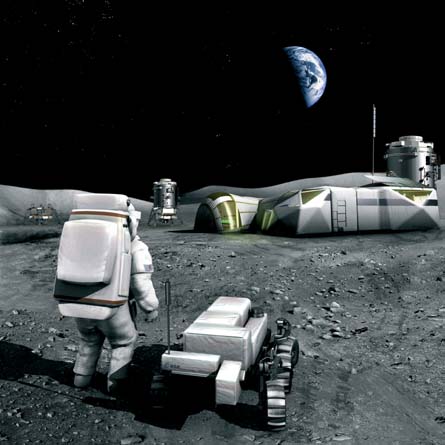By Rob Coppinger in London
A year-long industrial study identifying lunar science objectives and Mars exploration-related technologies that could be demonstrated in a Moon mission will report back to the European Space Agency later this year.
Led by Alcatel Alenia Space Italy and involving five European universities, the lunar study is part of the agency’s general exploration work, which is one of four parts of the core programme for ESA’s Aurora long-term exploration project.
|
|---|
| The lunar study is part of ESA's general exploration work |
The other three areas are the international Mars Sample Return mission; educational outreach; and the strategy, exploration architecture work. The latter would feed into the global strategy discussions that are under way. “We have the work plan, but we are currently defining what will be done under the core programme,” says Scott Hovland, head of the exploration systems unit in ESA’s human spaceflight directorate and based at the European Space Research and Technology Centre in the Netherlands.
Although Aurora has been Mars-focused, the Alcatel-led Moon study is the latest in a line of lunar analyses dating back to 2003. There was “Moon: the 8th continent”, a report produced by the independent Human Spaceflight Vision Group under invitation by ESA, which matched the agency’s technical capabilities with a vision of lunar exploration and was published internally in December 2003; January 2004 saw the European man-tended lunar base study; that December there was the sustainable lunar exploration study; in May 2005 a cargo transport systems analysis; and finally a lunar robotic mission study in December 2005. These reports are for ESA’s internal planning and were not made public.
Source: Flight International
























